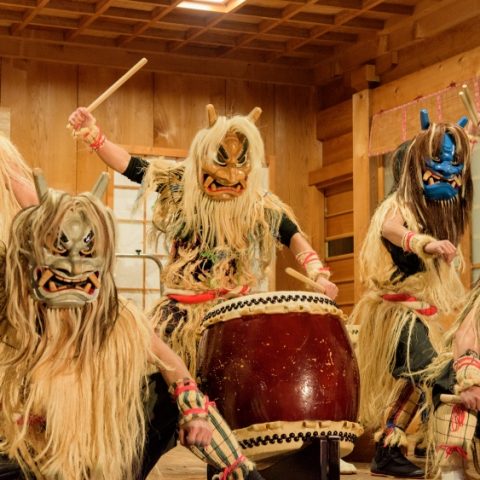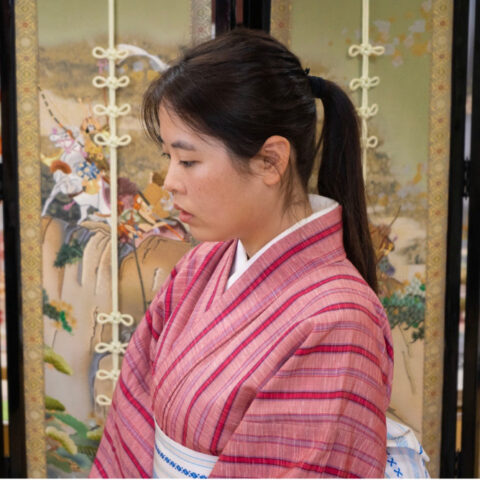
The other day, my best friend from Mexico sent me some pictures she found in an old CD album that I made for her a long time ago. It had pictures from our time in high school, and among those was one album titled “Sakura,” meaning cherry blossoms. My friend told me that she still remembers how much I longed to experience seeing the cherry blossom with my own eyes. My first six months in Japan were timed so that I would stay exactly until the end of April and have the chance to see them bloom. Unfortunately, I had to change my plans and leave Japan early. By the time I arrived back in Mexico, my friends in Japan were posting pictures of the cherry blossoms just one day after I left! Who knew that sakura could be such trolls? As you may know, these flowers bloom for no more than 2.5 weeks, and stay in full bloom for only around 1 week. Weather conditions like rainy or windy days may cut that time even shorter since these flowers are very delicate.
There are a few reasons for why the tradition of Hanami (花見, literally “flower viewing”) is such a major one. One reason is because the blossoming of cherry trees signifies the beginning of spring, and also the best time to plant rice. The ancient Japanese believed that mountain spirits lived inside the sakura trees and were blessing the fields with the flowers falling over them. It is also believed that this tradition started in China during the Tang dynasty when the nobility gathered to view plum blossoms. This tradition was adopted in Japan, starting first with the plum blossoms and then later moving on to cherry blossoms during the Heian Era (794-1192) when the sakura flower became the symbol of Japan. That is how Hanami became associated exclusively with the cherry blossom viewing, being the subject of countless Haiku poems and traditional Japanese Sumi-e and Ukiyo-e artwork.

Little by little, Hanami became not just an activity for high society, but for all of society. With the arrival of the samurai period, this tradition became deeply connected with Bushido, the warrior path. The short lifespan of the sakura flowers was often likened to the lives of these warriors. In their tradition, there is a way of dying with dignity and honor called “seppuku” or “harakiri,” committing ritual suicide when the situation called for it instead of being captured and executed by the enemy. Much like the samurai way, the cherry blossom trees release their flowers before they rot in their branches, creating a beautiful petal rain that covers everything. Legends say that the cherry blossoms were originally white, then became pink from the blood of the samurai who committed seppuku underneath the trees, getting one last glimpse at their beauty before taking their own life. As one can see, the briefness of this season is also part of the fascination behind it, reminding us that there’s never any time to lose.
During the Edo period, people from all walks of life gathered around the streets to celebrate Hanami. Emperors from this period started planting sakura trees at public parks and along major streets in big cities like Tokyo, Osaka and Kyoto, making this a national celebration. Nowadays, this occurs at the beginning of the school and company fiscal years, the periods when students return to study and companies have just hired a lot of new employees. People would gather around in parks and gardens to enjoy some traditional food and drinks. An interesting fact is that it’s often the duty of new employees to venture into these areas and find the best spot for everyone in their company to occupy. They sometimes even do this very early in the morning, so if you walk around these places during sakura season, don’t be surprised to find some lonely individuals taking a nap on a large floor mat to secure their spot. This will earn them extra favor with their bosses and coworkers.

Personally, I love the view of sakura trees wherever I go, but when you get together with other people to have a good time over delicious food and drinks, it becomes that much more enjoyable. For my first Hanami, I was invited by two of my friends to lunch at a nearby park where we worked at the time. We all brought different snacks and stopped by a convenience store to get a couple of beers. We laughed and shared stories, talking for hours and hours under the soft rain of sakura petals. It was like a scene straight out of a fairy tale, and a smile comes across my face whenever I recall it. So when I learned that Arigato Japan has two special Hanami tours in Tokyo, I was all in. The above story is such a precious memory of mine that I want to share that feeling of peaceful tranquility I got with as many people as I can.
Although we know most people who were planning to visit Japan this year will not be able to come, I would like to inform readers of these two special tours so we can look forward to doing them together next year in 2021!

One of these tours is in Oldtown Yanaka. This is a special neighborhood that survived the bombings of WWII, protected by its dozens of temples. It is now a bubbly area where artists come to find inspiration, and where shops are owned by the same families who opened them. Yanaka is also a hangout space for young people with some new shops that cater to them while still respecting the atmosphere that makes this neighborhood unique. Close to the Yanaka Cemetery is one of the best places to do Hanami in Tokyo. Yes, I know it may seem a bit grim, but for Japanese people, the cemetery is no place to fear. It is a place to honor your departed ones, bringing them things they liked on their special days or just coming to talk with them once in a while. As a Mexican, I find this to be very similar to what we do on “Día de Muertos” (Day of the Dead), so it’s very easy for me to connect with and appreciate the beauty in this way of thinking. During this tour, we stop briefly at this cemetary to have lunch after strolling and snacking around the neighborhood.

The other tour is in the trendy area of Nakameguro where you can experience a walking Hanami around the Meguro River, another favorite area with hundreds of street food stands lining it with beautiful pink light illumination around the trees. Shops here offer many different dishes, most of them inspired by cherry blossom colors. They also offer dishes that use the cherry blossoms themselves as an ingredient, carrying a very particular flavor that is probably not what your palate expects (no, it doesn’t taste like cherry). This area is where we wander around to have dinner and check out everything that it has to offer. All the while, we never abandon the ever-important Hanami atmosphere. Everywhere we go, you’ll find sakura flowers, pink decorations, and seasonal dishes. The evening lights will not be lit this year due to restrictions on large group events, but the blossoms will still bloom beautifully all the same.
This is a season when people enjoy togetherness and time spent with loved ones. But it is also a chance to reflect on how fragile life is, reminding us to cherish our passage through this world. Like the sakura flowers, we bloom, make people around us happy, and then someday leave this world peacefully and beautifully.
The year 2020 has been hard of all of us here and around the world and will not bring the ideal situation for Hanami. But if we remember the lessons of the sakura flowers, we can still enjoy this season with the understanding that our time is precious and we need to make the best of it no matter where we are.
And we can look forward to the future when we will have a chance to share this special time together.
Arigato Japan will be sharing photos and memories of the Hanami season in Japan for everyone to enjoy around the world. Please follow our social media to see them. We will also do a live Hanami stroll on Facebook and Instagram, and hope that you can join us.




